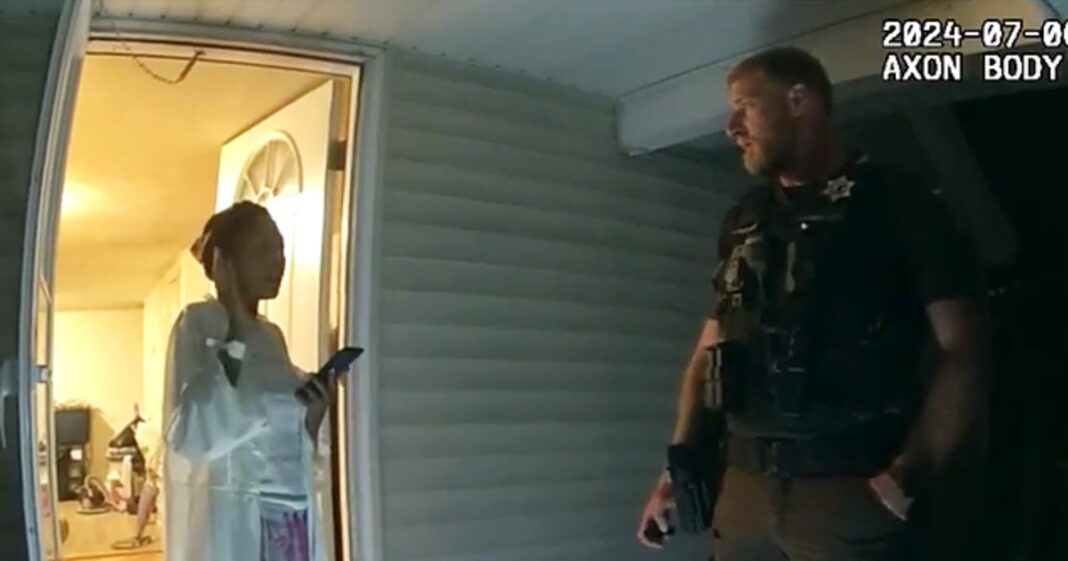Trial of Former Illinois Sheriff’s Deputy: A Deep Dive into the Shooting of Sonya Massey
The trial of Sean Grayson, a former sheriff’s deputy in Illinois, is unfolding as a poignant examination of police conduct and the complexities that arise during critical encounters. Grayson is charged in the fatal shooting of Sonya Massey, a 36-year-old Black mother of two, during a police response to a call about a possible prowler at her home on July 6, 2024.
Encounter with Police
Grayson took the stand, recounting the moments leading up to the tragic shooting. He described his arrival at Massey’s Springfield home, noting a vehicle with broken windows—later identified as Massey’s. This detail adds context to the officers’ concern and response in a situation that quickly escalated.
Upon entering, the deputies were met with voices inside, but their arrival was initially met with silence. When Massey finally opened the door, her request for help set a tense tone. Grayson recalled her demeanor as erratic, stating, “She was kind of all over the place, she just kept jumping from thing to thing.” This description hints at the volatility of the situation and the officers’ perspective as they assessed potential threats.
The Boiling Water Incident
The situation turned critical when Massey moved into her kitchen and picked up a pot of boiling water. Grayson interpreted her movements as a potential threat, particularly after she declared, “I rebuke you in the name of Jesus.” He expressed his fear that she might throw the hot water at him. This moment highlights the precarious nature of interactions between law enforcement and civilians, especially in cases where mental health or high-stress variables are at play.
As Massey approached Grayson with the pot, he opted not to use his stun gun, citing concerns that it might malfunction due to her clothing. “The taser doesn’t work on everybody,” he explained, adding a layer of insight into his decision-making process amidst high pressure. Grayson stated that he considered the stun gun but ultimately deemed it ineffective given the circumstances.
Escalation and Lethal Force
In his testimony, Grayson articulated a belief that the escalating situation left him with no alternative but to draw his firearm. He justified this action by stating, “we are trained to use force that will gain compliance.” This particular rationale introduces a significant conversation around the appropriateness of force used by police, especially when they perceive threats that may not align with the actual behavior of the subject.
During cross-examination, the prosecution highlighted discrepancies in Grayson’s account. State’s Attorney John Milhiser pointed out that Grayson had not mentioned in his initial report his intention to detain Massey for aggravated assault, nor did he include the explicit threats he made during the encounter. These omissions raise questions about transparency and the officer’s understanding of the situation.
Body Camera Footage and Expert Testimony
Body camera footage from the incident has become central to the trial. Prosecutors argue that it reveals Massey was not a legitimate threat to Grayson, contradicting his justification for lethal force. The footage shows moments leading up to the shooting, including Grayson’s threatening language: “You better f—— not, I swear to God I’ll f—— shoot you in your f—— face.”
In juxtaposition, expert testimonies have emerged, presenting differing perspectives on the appropriateness of Grayson’s actions. While one group of experts stated that Grayson escalated the situation unnecessarily, a defense witness argued that his approach to using force was justified as a means of de-escalation in high-stress environments.
Internal Conflicts Among Officers
Adding complexity to the case, Deputy Dawson Farley, who accompanied Grayson, previously testified that he felt no immediate threat from Massey. His testimony lends weight to the argument that the situation might have been misjudged. However, under cross-examination, it was revealed that changes were made to Farley’s report after the incident, suggesting possible external influences in the aftermath.
The Bigger Picture
The trial of Sean Grayson not only revolves around the specifics of the Simmons shooting but also taps into broader discussions about police training, the interpretation of threats, and the consequences of rapid decision-making in high-stress situations. The case highlights the need for reflective practices within law enforcement in America, fostering a dialogue on accountability, community relations, and appropriate use of force.
As the events of this trial unfold, they serve as a poignant reminder of the human lives impacted and the ongoing challenges within the criminal justice system. Each testimony and piece of evidence contributes to a larger narrative about the intersection of law enforcement and community safety, compelling us to consider the implications of every decision made in moments of crisis.



